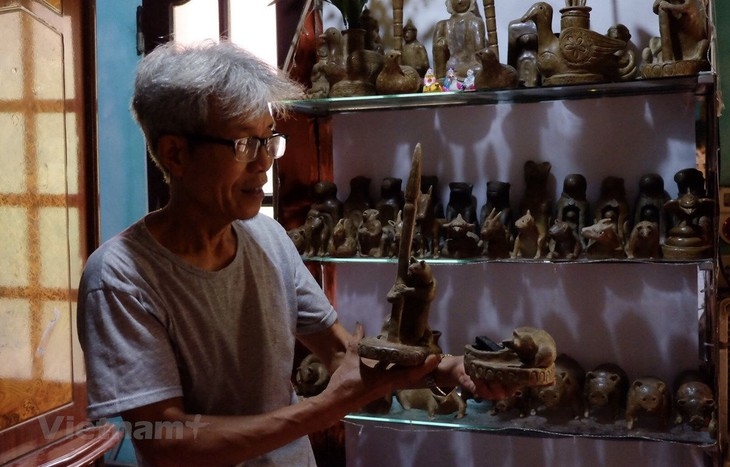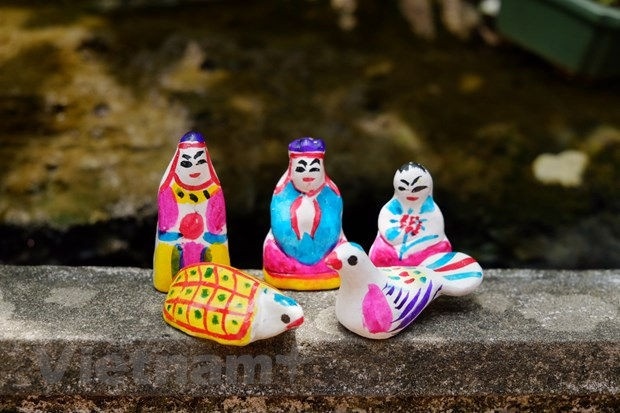Artisan strives to preserve clay statue making
VOV.VN - Clay statues are a traditional type of toy in Vietnam and common during the Mid-Autumn Festival and Lunar New Year (Tet).

They are usually figurines of animals, like turtles and birds, or people dressed in traditional outfits. Clay statues have lost their popularity, but Phung Dinh Giap is keen on keeping the old craft alive.
The process of making clay figurines requires a lot of steps. The main materials are clay and crepe paper. The painted statues are sun-dried and then coloured, primarily in white, black, yellow, blue, and red. Though the clay statues are not fired in a kiln, they are firm and durable.
“Making clay statues is a very meticulous process. The clay must be dug from a depth of 2.5 to 3 meters to have the required smoothness and cleanliness. It is then dried, ground into powder, and put through a sieve to become smooth and cool" said Giap.
"The crepe paper is soaked in water for seven days until it becomes soggy. After that, the clay powder is pounded and kneaded with the paper powder into a soft mixture, used to shape the statues.After shaping, the statues are sun-dried and painted with a mixture of scallop shell powder, sticky rice paste, and water,” he added.

A traditional set of statues comprises five images - Buddha, an old man, a child, a turtle, and a bird - each of which has a meaning. The Buddha symbolizes morality and conscience while the old man and child imply the succession of generations. The bird represents the aspiration for freedom and peace, and the turtle is a symbol of immortality and strength.
The clay statues used to be popular toys during the Mid-Autumn Festival. Nowadays they are disappearing, because kids prefer modern toys.
Phung Dinh Giap and his family are doing their best to revive the craft and better preserve it for future generations.
“I really love the craft. I often watch my grandfather making clay statues and learn from him. I want to do this job in the future," said Phung Khanh Linh, Giap’s granddaughter.
In addition to traditional clay statues, Giap and his family also create clay statues in diverse shapes and designs, including dolls, dinosaurs, cars, planes, and the 12 zodiac animals.
During summer time, Giap’s house becomes a favorite destination for many visitors, including tourists, school children, and people who want to explore this traditional craft. Giap is also invited to exhibitions and fairs across Vietnam to show the techniques of making earthen statutes.
“Making clay statues is our family’s craft passed down from one generation to another. I’ve been doing it since I was a small boy and I learned it from my grandfather and dad. Now my son is also involved in this trade. Learning about this craft and playing with clay statues is a very good way to educate the younger generations about Vietnam’s folk culture,” said Giap.
